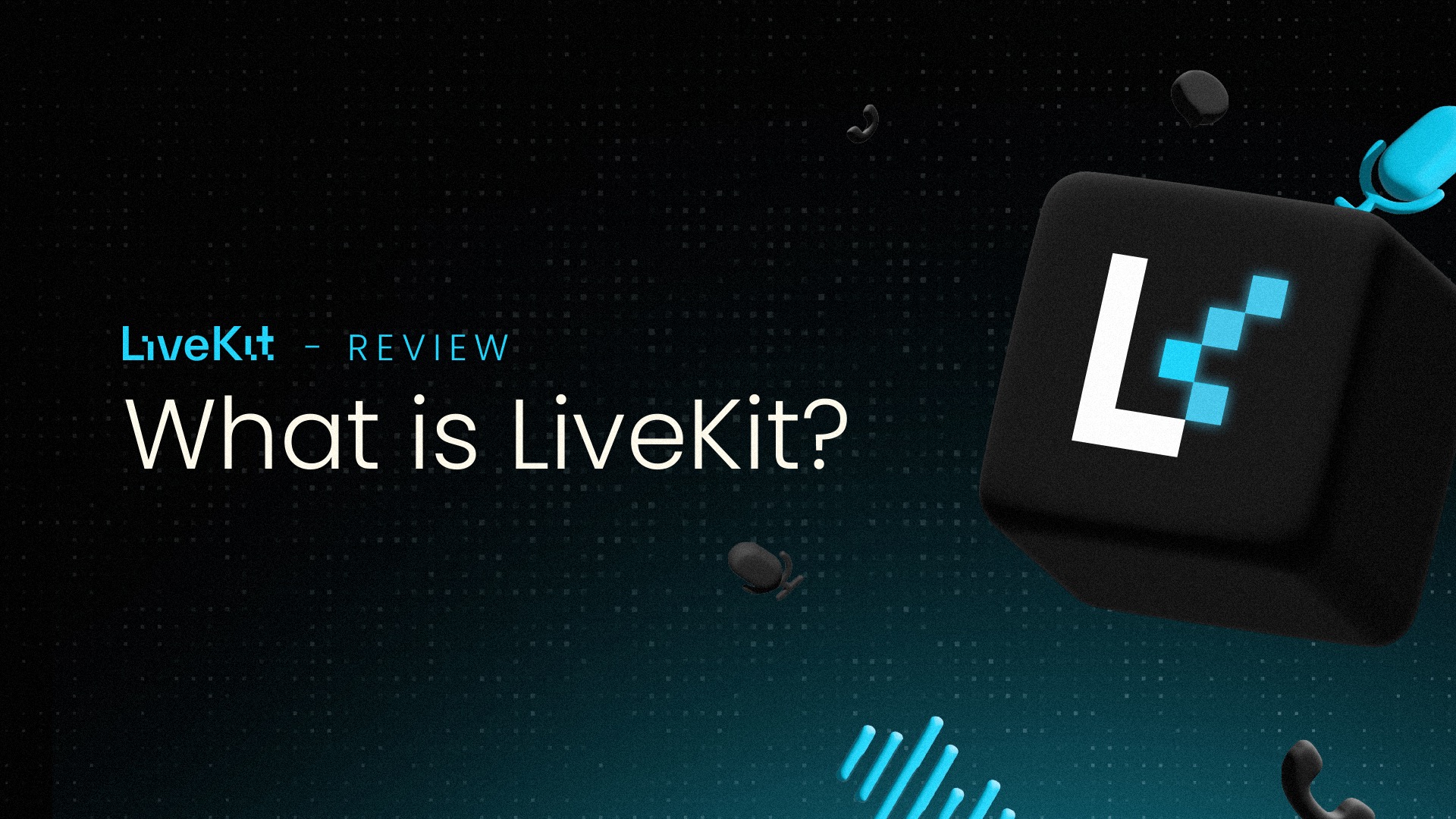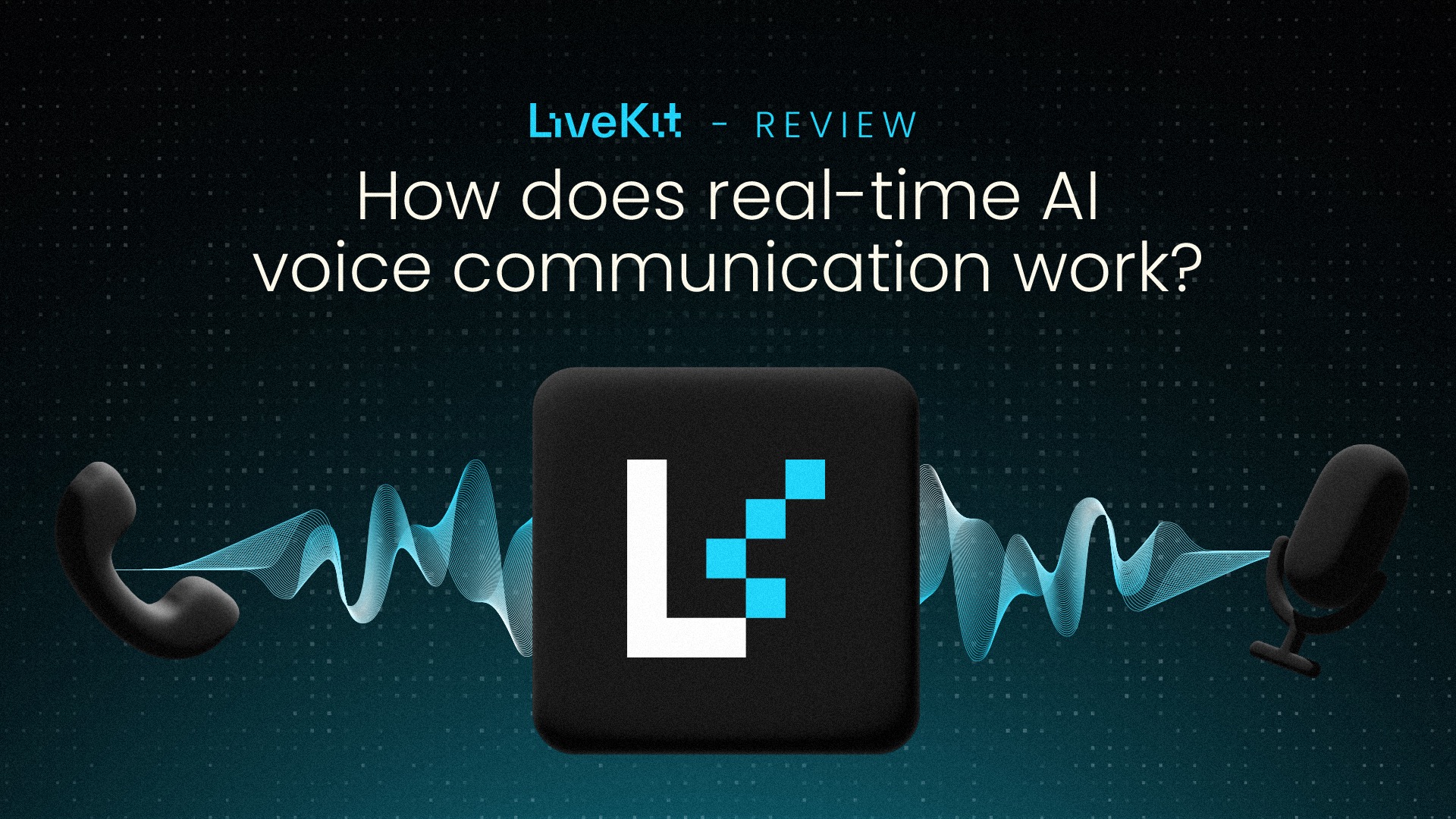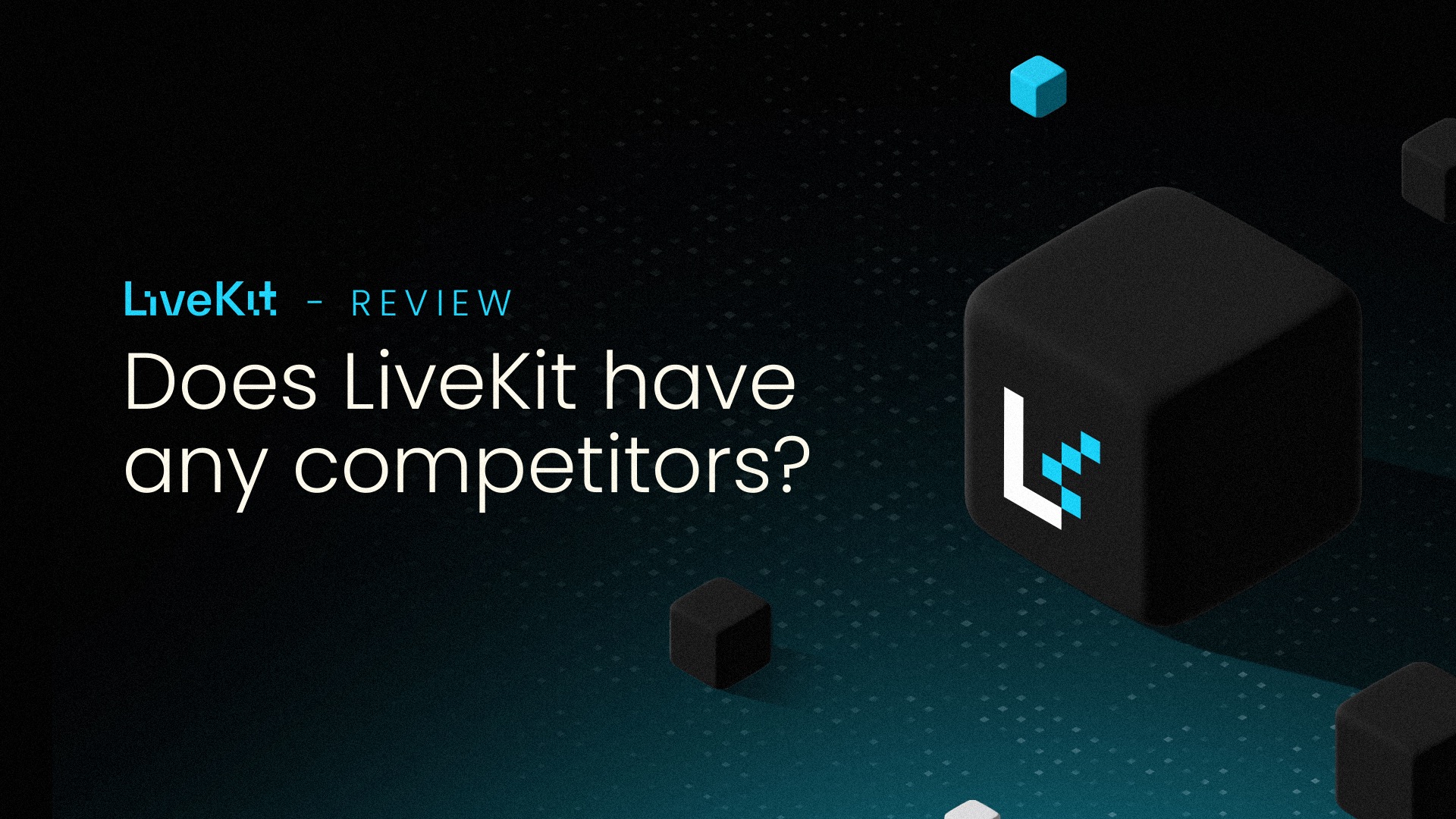LiveKit is an open-source platform designed for real-time communication applications, offering a scalable solution based on WebRTC for developers building video and audio experiences.
What is LiveKit?

LiveKit is an open-source platform designed for real-time communication applications, offering a scalable solution based on WebRTC for developers building video and audio experiences. Having raised funding of over $20 million from top US VCs, LiveKit’s bold mission is to allow AI to hear, see and speak, acting as the neural pathway delivering information from the brain (today’s LLMs) to users, whether via a consumer mobile app with live audio, or B2B client application for video streams.
With a robust open-source infrastructure, LiveKit provides end-to-end encryption, ensuring secure media streams for various use cases, including live streaming, video calls, multiplayer games, in-game video chat, and audio-only spaces.
One of the key use cases that gave LiveKit early traction within the developer community was its voice AI, allowing users to speak with LLMs in realtime, and counting customers like OpenAI as one of its flagship customers. LiveKit can detect speech and turn it into text, as well as give AI a human-like voice which can then be streamed real-time to client devices, from mobile apps - like telephony apps, online meetings or live classrooms - to desktop applications and web browsers. The platform also supports integration with client SDKs and server SDKs, enabling developers to customize and optimize their applications.
Is LiveKit open source or a closed source platform?
LiveKit is an open-source project that provides developers with access to its APIs, allowing extensive customization options. Unlike proprietary platforms, LiveKit’s open-source API gives businesses the flexibility to tailor their video communication needs to specific requirements. The LiveKit server and server SDKs enable developers to self-host their infrastructure or leverage LiveKit Cloud for a scalable, real-time communication solution.
The platform has an active community that continually contributes to its development, making it one of the best options for those seeking an open-source alternative to proprietary video conferencing tools. The LiveKit GitHub has been forked over 1,000 times with 12,000 stars, and the company organizes regular Community Days to showcase key contributors and how they’ve managed to get over the hurdles of building on their open source API with WebRTC.
How does real-time AI voice communication work?

Real-time voice relies on media routing through LiveKit’s selective forwarding unit (SFU), which optimizes bandwidth usage and video quality. The platform’s low latency capabilities enable real-time interactions with simultaneous participants, ensuring a smooth user experience for video applications.
Where it gets interesting is LiveKit’s ability to give your AI agent a human-like voice, thanks to text-to-speech partners like Neuphonic. Here at Neuphonic, we’ve built one of the smallest, most stable voice models that runs at high concurrency and synthesizes real time AI voice solutions for businesses like call centres, customer service teams and more. You can get started with Neuphonic on TypeKit today and choose from a range of languages like English, Spanish, Hindi and more.
In a recent experiment, Neuphonic ran ~100 voice samples through competitors like Cartesia, ElevenLabs and ElevenLabs Flash. Across different input lengths and contexts, Neuphonic came out top in terms of voice realism and production stability.
LiveKit supports various programming languages, making it a flexible choice for developers wanting to use an open source platform in building real-time audio and video communication applications. The platform’s turn servers and media tracks help in maintaining reliable connections offered by LiveKit APIs, while advanced features such as detailed reports, actionable insights, and real-time collaboration tools provide businesses with a clear understanding of their communication platform.
Companies that benefit by using LiveKit’s platform and API
LiveKit serves a wide range of use cases, including:
-
Live Streaming & Media Companies: Broadcasters and content creators benefit from LiveKit’s real-time video streaming capabilities, allowing for high-quality video experiences
-
Gaming & Multiplayer Applications: Developers of multiplayer games use LiveKit’s real-time communication capabilities for in-game voice and video chat
-
Enterprise & Collaboration Tools: Businesses building virtual meeting platforms or collaborative workspaces rely on LiveKit’s open-source platform for online meetings and video conferencing
-
Healthcare & Telemedicine: Reliable video consultations and telephony apps use LiveKit’s secure and scalable communication platform
-
Education & Live Classrooms: Interactive online education platforms leverage LiveKit’s real-time features to enhance remote learning
-
Development Teams & Open-Source Contributors: Engineers working on open-source projects, upcoming platform features, and strategic initiatives benefit from LiveKit’s detailed product information and technical documentation
With support for a wide range of product categories, LiveKit is an excellent choice for businesses seeking a customizable and powerful alternative to proprietary solutions
LiveKit pricing model
LiveKit offers both self-hosted and cloud-based options, making it a flexible solution for different business needs. The pricing structure includes:
-
LiveKit Cloud: A managed solution designed to build massive-scale video applications with seamless deployment
-
Self-hosted LiveKit Server: Ideal for developers who want complete control over their infrastructure
-
Custom Enterprise Plans: Tailored solutions for businesses with specific needs and strategic initiatives
For LiveKit Cloud customers, there are three key pricing plans that allow you to scale up and down before you reach Enterprise level.
-
Build - $0 per month - 100 concurrent participants, 5,000 connection minutes and 50GB bandwidth
-
Ship - $50 per month - 1,000 concurrent participants, 150,000 connection minutes and 250GB bandwidth
-
Scale - $500 per month - Unlimited concurrent participants, 1.5 million connection minutes and 3TB bandwidth
Each of the above plans offer various other features which you can read more about on the LiveKit pricing page. By offering a balance between cost-effectiveness and advanced capabilities, LiveKit ensures businesses can develop real-time communication applications without excessive expenses.
Does LiveKit have any competitors?

If you’re looking for voice AI agent capabilities, LiveKit competes with several platforms in the real-time speech space, including:
-
Lindy: Lindy voice agents offers a more user-friendly user interface for non-developers. Lindy also offers agents that can update your CRM, do follow-up calls, manage tasks, assist with sales pipeline, enable compliance and schedule meetings
-
Synthflow: Synthflow competes on cost with Vapi, offering a flat-pricing business model at $0.13 per minute. For this you get ElevenLabs integration included as well as transcription and high concurrency
-
Vapi: Vapi is an AI voice agent platform providing human-sounding voice agents to deal with inbound and outbound phone calls, popular with customer service businesses with prices starting from $0.05 per minute, although there is a free trial plan for testing. Read our Vapi review here
-
Retell: Retell AI ensures compliance with industry standards like HIPAA and SOC 2 Type II and allows for single and multi prompt AI voice agents with support for custom LLMs and 19 languages
-
Pipecat: Pipecat is an open-source Python framework for building conversational voice agents. It is less scaleable than competitors like LiveKit but it has an active community for developers looking for ultimate flexibility
-
Vocode: Vocode is another open-source voice AI platform that builds voice agents on top of LLMs. However it is more difficult to use for non-technical users
Despite competition, LiveKit stands out due to its open-source infrastructure, extensive customization options, and developer-friendly approach.
Should I use LiveKit for my applications?
If your business requires real-time communication capabilities with an open-source foundation, LiveKit is an ideal choice. Whether you’re building voice calling apps, media routing solutions, or real-time collaboration tools, LiveKit’s advanced features and scalability make it a reliable solution.
The platform’s upcoming platform features and continuous development, driven by an engaged community, ensure that businesses using LiveKit remain at the forefront of real-time video and audio innovation. If you value a secure, flexible, and high-performance communication platform, LiveKit is undoubtedly one of the best options available in 2025.
Whether you’re dealing with technical challenges, unauthorized access concerns, or time-consuming tasks related to real-time interactions, LiveKit provides a scalable and reliable solution.



